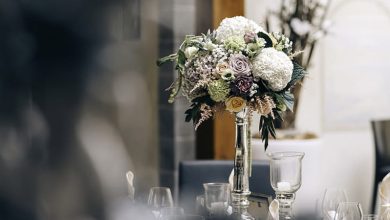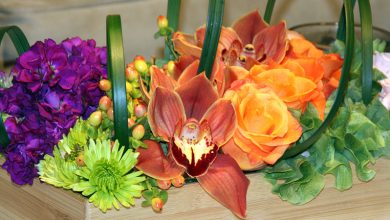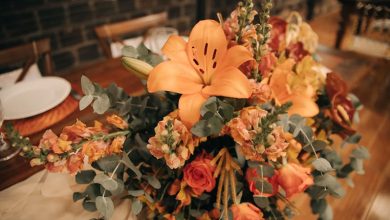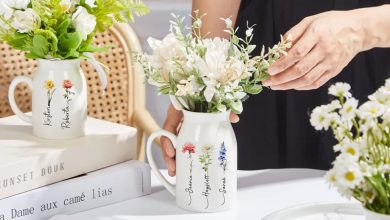The History of Artificial Flowers: From Past to Present
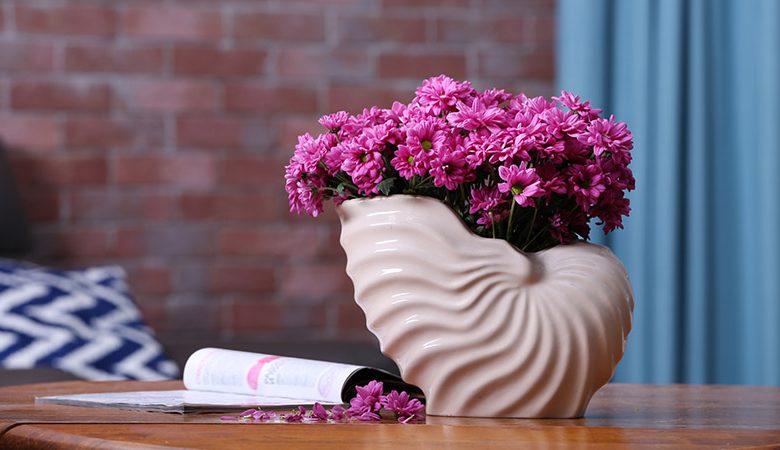
Artificial flowers have a captivating history that spans centuries, with origins dating back to ancient civilizations. Let’s delve into the fascinating journey of artificial flowers from the past to the present.
Ancient Beginnings in the History of Artificial Flowers
The history of artificial flowers finds its roots in the ancient civilizations of Egypt, Greece, and Rome, where artisans crafted primitive replicas of flowers using materials such as clay, wood, and fabric.
These early creations served both practical and ceremonial purposes, adorning homes, temples, and tombs with symbolic representations of beauty, fertility, and religious significance.
The ancient Egyptians, in particular, were known for their intricate floral arrangements, using flowers as offerings to the gods and as adornments for the deceased in the afterlife. Similarly, the Greeks and Romans incorporated artificial flowers into their religious ceremonies and festivals, celebrating the beauty of nature through elaborate floral displays.
Materials Used in Ancient Times
- Clay: Clay was one of the most common materials used for crafting artificial flowers in ancient times. Artisans would mold clay into the shapes of flowers and then paint them to mimic the colors of real blooms.
- Wood: Wood was another popular choice for creating artificial flowers, with artisans carving intricate designs to replicate the delicate petals and leaves of natural flowers.
- Fabric: Fabric such as linen or silk was often used to create more realistic-looking artificial flowers. These fabric flowers were meticulously handcrafted, with each petal and leaf carefully sewn or embroidered to resemble its natural counterpart.
Symbolism and Significance
- Religious Ceremonies: Artificial flowers played a significant role in religious ceremonies and rituals, symbolizing purity, rebirth, and the cycle of life and death. They were used as offerings to deities and as decorations for sacred spaces.
- Funerary Practices: Artificial flowers were commonly placed in tombs and burial sites as symbols of remembrance and respect for the deceased. They were believed to accompany the soul into the afterlife and provide comfort in the journey beyond.
Legacy and Influence
- Artistic Inspiration: The artistry and craftsmanship of ancient artificial flowers continue to inspire contemporary artists and designers, influencing the creation of modern floral arrangements and decorative motifs.
- Cultural Heritage: The use of artificial flowers in ancient civilizations reflects the enduring human fascination with nature’s beauty and the desire to capture its essence through artistic expression. Today, artificial flowers remain an integral part of cultural heritage, bridging the gap between the past and the present.
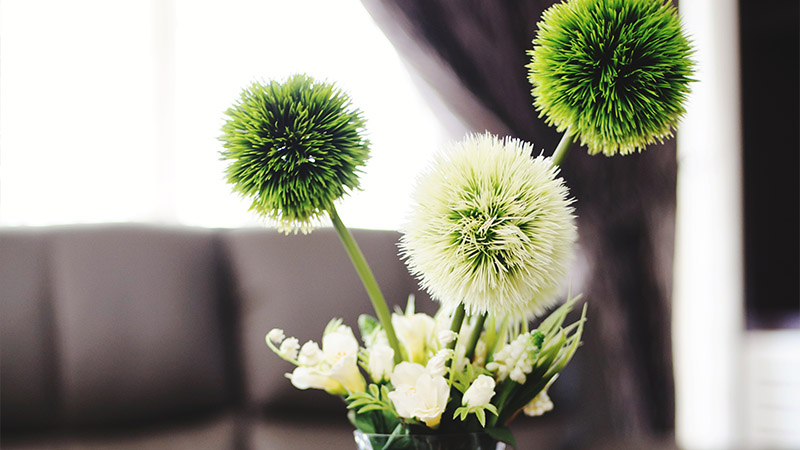
The history of artificial flowers has its origins in the artistic and cultural traditions of ancient civilizations, where these exquisite creations served as symbols of beauty, spirituality, and reverence for the natural world.
As we trace the evolution of artificial flowers through time, we gain a deeper appreciation for their enduring appeal and significance in human history.
Read More: Are Artificial Flowers Toxic? A Comprehensive Guide
Renaissance Revival in the History of Artificial Flowers
The Renaissance period marked a significant revival in the artistry and craftsmanship of artificial flowers. As Europe emerged from the Middle Ages into a new era of cultural and intellectual enlightenment, there was a renewed interest in botany and the natural world.
This resurgence in botanical studies inspired artisans to create lifelike replicas of flowers using luxurious materials such as silk, velvet, and wax. These exquisite artificial flowers adorned the homes of royalty, nobility, and affluent merchants, serving as symbols of wealth, refinement, and artistic sophistication.
Artistic Flourishing
During the Renaissance, the art of artificial flower-making flourished in cities such as Florence, Venice, and Paris, where skilled artisans honed their craft and developed innovative techniques for creating realistic floral designs.
Using delicate fabrics and intricate embroidery, they painstakingly recreated the intricate details of flowers, from the delicate veins of petals to the subtle variations in color and texture. These masterpieces adorned grand palaces, lavish gardens, and opulent interiors, reflecting the opulence and elegance of the Renaissance era.
Patronage and Prestige
Artificial flowers became highly sought-after commodities among the elite and aristocracy, who commissioned elaborate floral arrangements to adorn their homes and entertain guests.
Wealthy patrons would vie for the services of renowned flower makers, who were esteemed for their artistic talent and ability to capture the beauty of nature in their creations.
The display of artificial flowers became a status symbol, signifying refinement, taste, and cultural sophistication.
Technological Advancements
The Renaissance period also saw advancements in technology that further enhanced the art of artificial flower making. Innovations in weaving, dyeing, and metalwork allowed artisans to experiment with new materials and techniques, resulting in more intricate and lifelike designs.
Silk, in particular, emerged as the preferred material for creating artificial flowers due to its natural luster, softness, and versatility. Wax flowers also gained popularity, with artisans molding and sculpting beeswax into intricate floral shapes that retained their beauty over time.
Read More: Are Artificial Flowers Bad Luck? Unveiling the Truth
Legacy and Influence
The Renaissance revival of artificial flowers left a lasting legacy that continues to inspire artists, designers, and historians to this day. The exquisite craftsmanship and attention to detail of Renaissance-era artificial flowers serve as a testament to human creativity and ingenuity, bridging the gap between art and nature.
Today, artificial flowers remain a popular choice for home decor, weddings, and special events, embodying the timeless beauty and elegance of the Renaissance era.
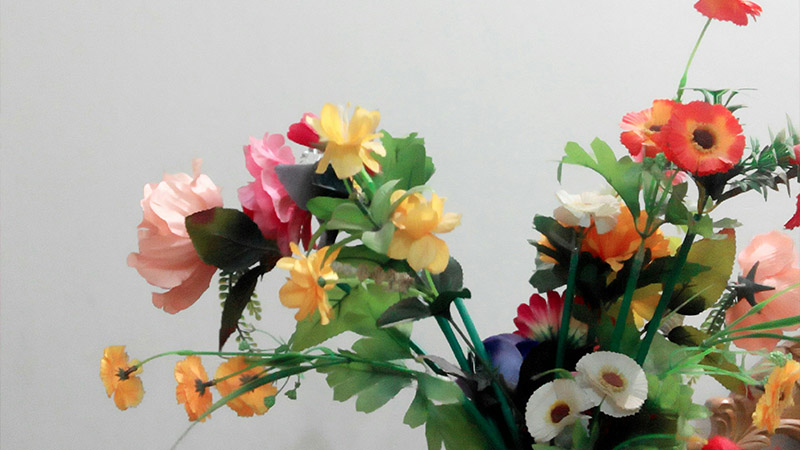
The history of artificial flowers during the Renaissance period is a testament to the artistic genius and cultural refinement of the era, where artisans elevated floral design to new heights of beauty and sophistication.
As we admire the exquisite creations of the past, we gain a deeper appreciation for the enduring allure of artificial flowers and their place in the rich tapestry of human history.
Industrial Revolution and Mass Production
The Industrial Revolution, which began in the late 18th century and continued into the 19th century, marked a profound shift in society, economy, and technology. One of the key developments during this period was the mechanization of production processes, which revolutionized various industries, including textiles, manufacturing, and agriculture.
The invention of new machinery and the utilization of steam power enabled factories to produce goods on a much larger scale than ever before, leading to the rise of mass production techniques.
Mechanization of Flower Making
During the Industrial Revolution, artificial flower-making underwent a transformation with the adoption of mechanized production methods. Instead of relying solely on handcrafting techniques, factories began using machines to streamline the manufacturing process and increase efficiency.
Automated looms and presses were used to cut and shape materials such as fabric, plastic, and wire into floral components, while assembly lines facilitated the rapid production of finished flower arrangements.
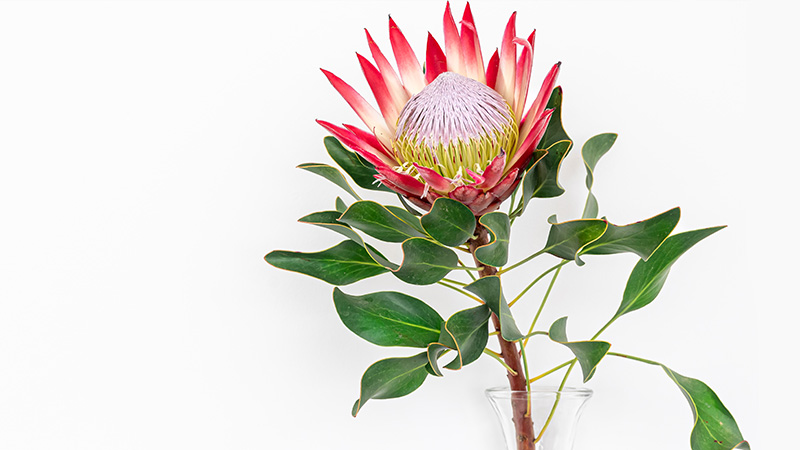
Synthetic Materials and Innovation
The Industrial Revolution also saw the emergence of synthetic materials such as celluloid, plastic, and nylon, which revolutionized the production of artificial flowers. These new materials offered advantages such as durability, flexibility, and affordability, making artificial flowers more accessible to a wider audience.
Innovations in dyeing and coloring techniques allowed manufacturers to create artificial flowers in a myriad of colors and styles, mimicking the diversity of natural blooms with greater precision.
Read More: Where to Buy Artificial Flowers in Toronto? The Ultimate Guide
Accessibility and Affordability
Mass production techniques made artificial flowers more affordable and accessible to the general public, democratizing their use beyond the upper classes. As factories churned out artificial flowers in large quantities, they became readily available in markets, department stores, and catalogs, allowing people from all walks of life to adorn their homes with floral decorations.
This newfound accessibility contributed to the widespread popularity of artificial flowers as a decorative element in households across the globe.
Cultural Impact and Legacy
The Industrial Revolution had a profound impact on the history of artificial flowers, shaping their production, distribution, and cultural significance. The mass production of artificial flowers during this period transformed them from luxury commodities into everyday household items, symbolizing the changing dynamics of consumer culture and the modernization of society.
The legacy of the Industrial Revolution continues to influence the production and design of artificial flowers today, as manufacturers strive to balance efficiency with creativity and innovation.
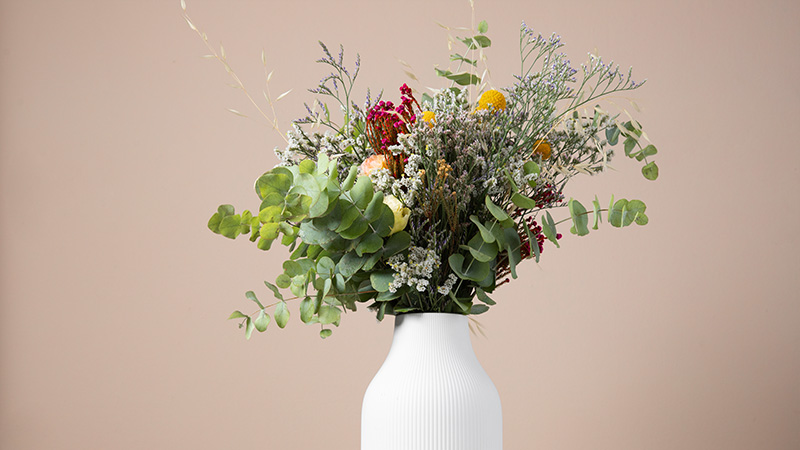
The Industrial Revolution marked a pivotal moment in the history of artificial flowers, ushering in an era of mass production and technological advancement that transformed them from luxury items into accessible decorations for everyday use.
As we reflect on this period of innovation and change, we gain a deeper appreciation for the enduring legacy of artificial flowers and their role in shaping the aesthetics of our modern world.
Modern Innovations in the History of Artificial Flowers
In recent decades, the history of artificial flowers has been marked by remarkable innovations that have transformed their appearance, quality, and usability. Let’s delve into some of the key advancements that have defined the modern era of artificial flower making.
Read More: How to Make a Flower Arrangement with Artificial Flowers: A Step-by-Step Guide
Advanced Materials and Technologies
Modern artificial flowers are crafted using a diverse range of materials, including silk, polyester, latex, and plastic, each offering unique benefits in terms of realism, durability, and affordability. These materials are often combined with advanced technologies such as 3D printing, laser cutting, and digital imaging to create highly detailed and lifelike floral designs.
By harnessing the power of technology, manufacturers can achieve unprecedented levels of precision and accuracy in replicating the natural beauty of flowers.
Realism and Authenticity
One of the most significant advancements in modern artificial flowers is their remarkable realism and authenticity. Through meticulous attention to detail and innovative production techniques, artificial flowers now closely resemble their natural counterparts in appearance, texture, and even scent.
High-quality artificial flowers can be indistinguishable from real flowers to the naked eye, offering a convincing alternative for those seeking long-lasting floral arrangements without compromising on aesthetics.
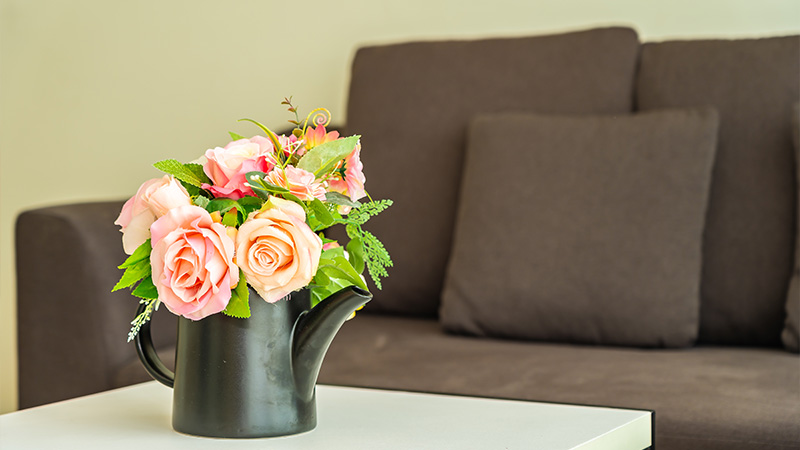
Customization and Personalization
Modern artificial flower making allows for greater customization and personalization, catering to diverse tastes and preferences. Customers can choose from a wide selection of flower types, colors, and arrangements, or even request bespoke designs tailored to their specific needs.
Whether for home decor, weddings, or special events, artificial flowers offer endless possibilities for creative expression and individualization, allowing people to create unique floral displays that reflect their style and personality.
Sustainability and Eco-Friendliness
In response to growing environmental concerns, the history of artificial flowers has seen a shift towards sustainability and eco-friendliness. Manufacturers are increasingly using recycled materials, biodegradable components, and environmentally friendly production processes to minimize their ecological footprint.
Artificial flowers offer a more sustainable alternative to fresh flowers, reducing the need for water, pesticides, and transportation associated with traditional flower cultivation and distribution.
Versatility and Longevity
Artificial flowers are prized for their versatility and longevity, making them ideal for a wide range of applications and environments. Unlike fresh flowers, artificial flowers do not wilt or wither over time, allowing them to maintain their beauty and freshness indefinitely.
They can be used in indoor and outdoor settings, withstand various weather conditions, and require minimal maintenance, making them a convenient and cost-effective choice for home decor and landscaping.
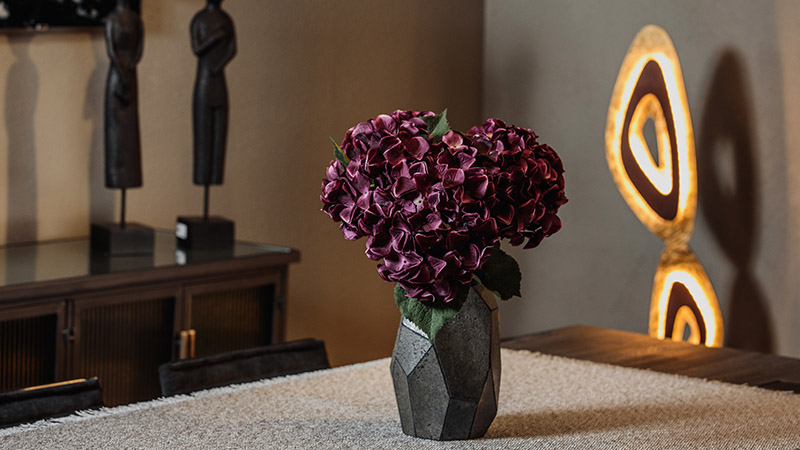
Modern innovations have revolutionized the history of artificial flowers, elevating them from simple imitations to sophisticated works of art that rival the beauty and charm of natural blooms.
As we continue to embrace artificial flowers in our homes, events, and daily lives, their rich history and ongoing evolution serve as a testament to their enduring appeal and relevance in the modern world.
Contemporary Uses and Trends in the History of Artificial Flowers
Artificial flowers have found their place in various aspects of modern life, offering a versatile and long-lasting alternative to fresh flowers. Let’s delve into some of the key uses and trends that define the contemporary landscape of artificial flower usage.
Home Decor
- Versatile Styling: Artificial flowers are widely used in home decor, offering endless possibilities for styling and accessorizing. From floral arrangements and centerpieces to wreaths and wall art, artificial flowers can add a touch of color and elegance to any room.
- Seasonal Decor: Artificial flowers are particularly popular for seasonal decor, allowing homeowners to create festive displays for holidays and special occasions without the need for fresh flowers. They can be easily swapped out to reflect changing seasons and themes throughout the year.
- Low Maintenance: Artificial flowers require minimal maintenance compared to their fresh counterparts, making them ideal for busy households or those with allergies to pollen. They can be easily cleaned and rearranged as needed, ensuring long-lasting beauty with minimal effort.
Events and Celebrations
- Weddings and Parties: Artificial flowers are a popular choice for weddings, parties, and other special events, offering brides and event planners a cost-effective and customizable option for floral arrangements. They can be used in bouquets, boutonnieres, centerpieces, and venue decorations, providing consistent color and quality throughout the event.
- Corporate Events: Artificial flowers are also commonly used in corporate events and functions, where they can be tailored to match branding colors and themes. They offer a practical solution for event planners seeking durable and reusable decor options that can withstand the rigors of transportation and setup.

Fashion and Art
- Fashion Accessories: Artificial flowers have made a comeback in the world of fashion, adorning clothing, accessories, and hairpieces with delicate floral embellishments. They add a whimsical and romantic touch to outfits, bringing a sense of beauty and femininity to fashion design.
- Artistic Expression: Artificial flowers are often used as artistic mediums in various forms of art, including sculpture, photography, and mixed media. Artists and designers experiment with artificial flowers to create unique and visually striking compositions that explore themes of beauty, nature, and temporality.
Sustainable Alternatives
- Environmental Consciousness: With increasing awareness of environmental issues, artificial flowers have emerged as a sustainable alternative to fresh flowers. They reduce the demand for water, pesticides, and transportation associated with traditional flower cultivation, helping to minimize environmental impact.
- Longevity and Reusability: Artificial flowers offer longevity and reusability, allowing them to be enjoyed for years without the need for replacement. They can be recycled or repurposed at the end of their lifespan, contributing to a more sustainable approach to floral design and decoration.
Contemporary uses and trends in the history of artificial flowers reflect their enduring appeal and adaptability in a rapidly changing world. From home decor and events to fashion and art, artificial flowers continue to inspire creativity and bring beauty into our lives in new and exciting ways.
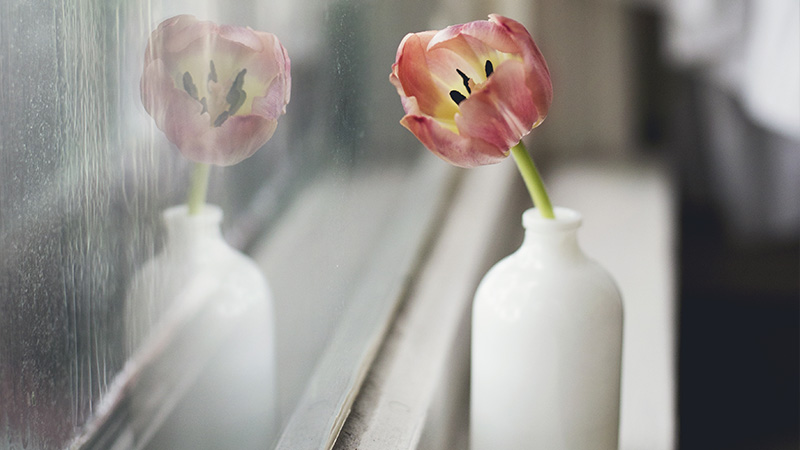
The history of artificial flowers is a testament to human ingenuity and creativity, spanning centuries of innovation and evolution. From ancient beginnings to modern innovations, artificial flowers have remained a timeless symbol of beauty and elegance.
As we continue to embrace artificial flowers in our daily lives, their history serves as a reminder of the enduring appeal and versatility of these exquisite creations. Whether adorning our homes, celebrating special occasions, or expressing artistic visions, artificial flowers continue to captivate hearts and inspire imaginations across the globe.


